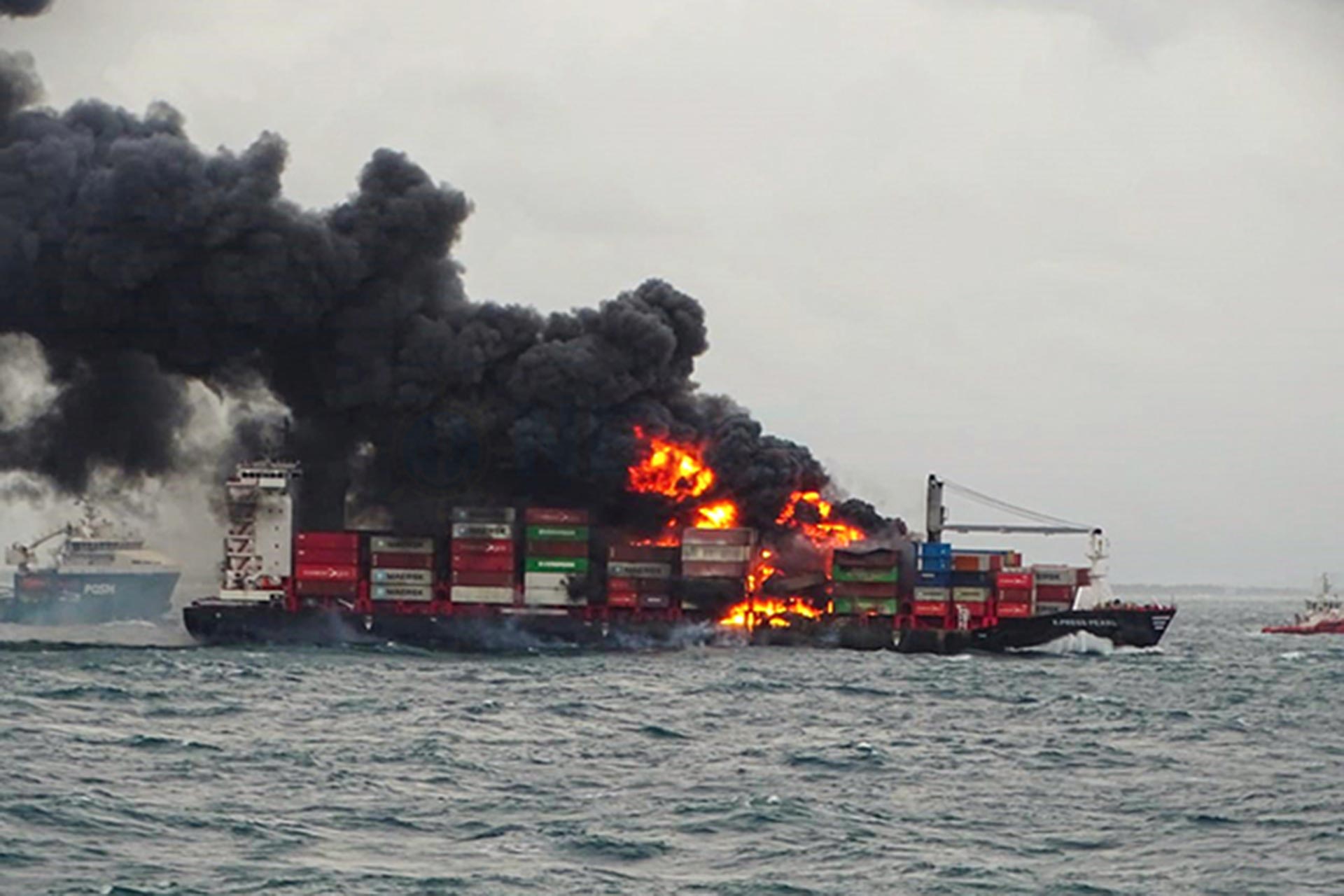20 elephant deaths were reported in six years in the Horowapathana Elephant Holding Ground in North Eastern Sri Lanka.
- 20 elephant deaths were reported within six years
- Postmortem reports confirm that 16 deaths were due to malnutrition
- Audit reports reveal fraud in funds allocated for feeding elephants
- It is suspected that elephants were shot to death under the pretext that they were trying to escape from the holding ground
- Elephant attacks within the vicinity of the EHG claim 10 lives
- Minister admits that investigations have been covered up
In Sri Lanka, more elephants are killed by humans each year in comparison to the number of humans killed by wild elephants. The root cause for the rise in the conflict between humans and elephants in Sri Lanka is the loss of habitat due to illegal forest clearing on the pretext of development projects, encroachment and land grabbing.
It is inevitable that when food becomes scarce in wildlife sanctuaries, elephants instinctively make their way out and feed on chena and paddy cultivations that border the sanctuaries. This gives rise to Human-Elephant Conflict (HEC) and in the end, farmers resort to killing these animals to safeguard their crops and lives.
The Elephant Holding Ground (EHG) was established in Horowapathana in 2015 with the aim of minimizing the harm caused to humans by wild elephants. However, serious problems in its design — as well as in its management and operation — have resulted in increased conflict between humans and elephants in the vicinity of the EHG and have resulted in the loss of lives of both elephants and humans. It appears that instead of solving the problem, the problem has only been shifted from one place to another.
This is just one aspect of the many issues at the Horowapathana Elephant Holding Center. The worst-case scenario is that a significant number of the elephants held at the holding ground have died, in most cases due to malnutrition and starvation.
Cabinet Memorandum No. 12/0151/549/001 dated 17 March 2012 proposing the establishment of the Horowapathana Elephant Holding Ground at a cost of Rs 345 million specifically states that an environmental impact report (EIR) should be obtained before construction commences. But it was revealed that no EIR was obtained.
A sum of Rs. 26,133,700 was allocated to provide food for 30 elephants being held at the Horowapathana Elephant Holding Ground for the period from 1 November 2018 to 31 October 2019.But the Auditor General’s report IIN / F / DWC / 19 / PR / 11 issued in October 2020 shows that no consideration was given to either the quality or edibility of the food provided or whether the elephants liked it or not. The report also points out that many instances of large-scale fraud had taken place.
Information obtained from the Department of Wildlife Conservation through the Right To Information (RTI) revealed that 65 wild elephants had been taken to the Horowapathana Elephant Holding Ground after it was opened on 3 September 2015. But observations revealed that the actual figure should be 68. According to wildlife officials, there were only four elephants at the EHG as of 2 January 2022.It was also revealed that more than 20 elephants have died within the Horowapathana Elephant Holding Ground while other elephants have escaped or died in their attempts to escape.

The land area of the Horowapathana Elephant Holding Center is 997 hectares. (9.98 sq km). Information provided by the Department of Wildlife Conservation on 10 September 2014 revealed that the first elephant brought to this holding ground on 3 September 2015was from Palapathwala in the Matale district. It was 8 feet and 6 inches tall and about 35 years old.
Postmortem reports of the dead elephants obtained from the Department of Wildlife Conservation show that the cause of death of one 25-year-old elephant was electric shock but it also noted there were bullet marks on the carcass.
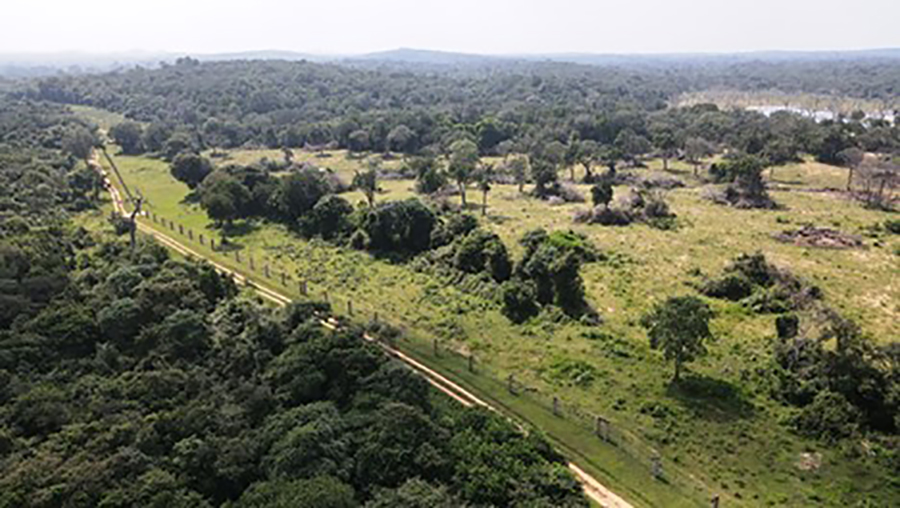
A 40-year-old elephant that escaped from the Horowapathana Elephant Holding Ground on 24 September 2019, had been shot dead in the Mukkara Wewa area in Horowapathana(an area outside the Elephant Holding Ground). The postmortem report revealed that the elephant had been shot at several times.
When a request was made through RTI for the quantity of live ammunition issued to the EHG annually, the Department of Wildlife Conservation refused to divulge the information stating that revealing such information was a threat to national security and abuse of section 5 of the RTI act. An appeal made to the Information Commission in this regard is pending.
Kalyani Wijethunga (59) who resides in the Morawewa area in Horowapathana said that the villagers know when an elephant is brought to the Horowapathana EHG as it keeps on trumpeting for two or three days. “Then it somehow finds its way out of the EHG and comes to our villages and feeds on our crops,” she said.
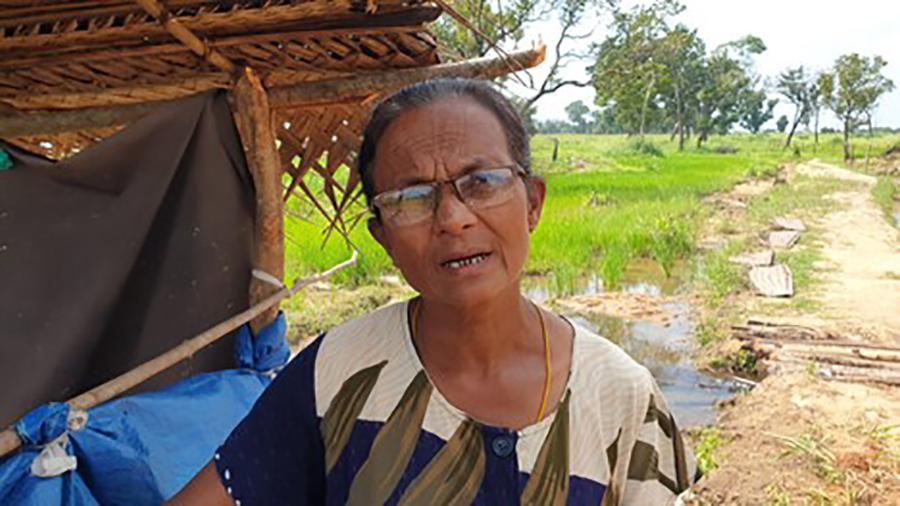
Local resident Kalyani Wijethunge says that elephants brought to the EHC make their way out within a few days / Credit: Ceylon News 24.
The postmortem reports also confirmed that the some of the elephants’ legs bore injuries inflicted by iron spikes. In the case of the blind elephant which roamed in the Sigiriya Sanctuary and surrounding villages and was captured on 17 May 2018, wildlife officials told the media that the elephant would be taken to the Udawalawe Elephant Sanctuary for treatment. But the elephant was taken to the Horowapathana Elephant Holding Ground and was found dead in the Kapugollewa area of the holding ground on 14 November, 2018.
Information provided by the Department of Wildlife Conservation on 15 March 2021 in response to a query made through the Right to Information Act (RTI) does not mention that this wild elephant was taken to the Horowapathana Elephant Holding Ground and proves that in some instances wild elephants have been taken to the Horowapathana Elephant Holding Ground without any records or documentation. The fate of this wild elephant would still be a mystery if the postmortem reports of the elephants that had died within the Horowapathana EHG had not been sought through the RTI Act.
Villages said that this particular elephant had become blind after living in another sanctuary called Sigiriya Sanctuary and roamed in the surrounding villages nearby. It urgently needed medical attention and treating it was the responsibility of wildlife officials. The villagers as well as wildlife officials confirm that no one in the area was harmed by this elephant. This incident shows that the officials of the Department of Wildlife Conservation had deliberately neglected their primary responsibility to conserve wildlife by not taking this animal for treatment to the Udawalawa Elephant Sanctuary as planned, instead it was taken to Horowapathana.

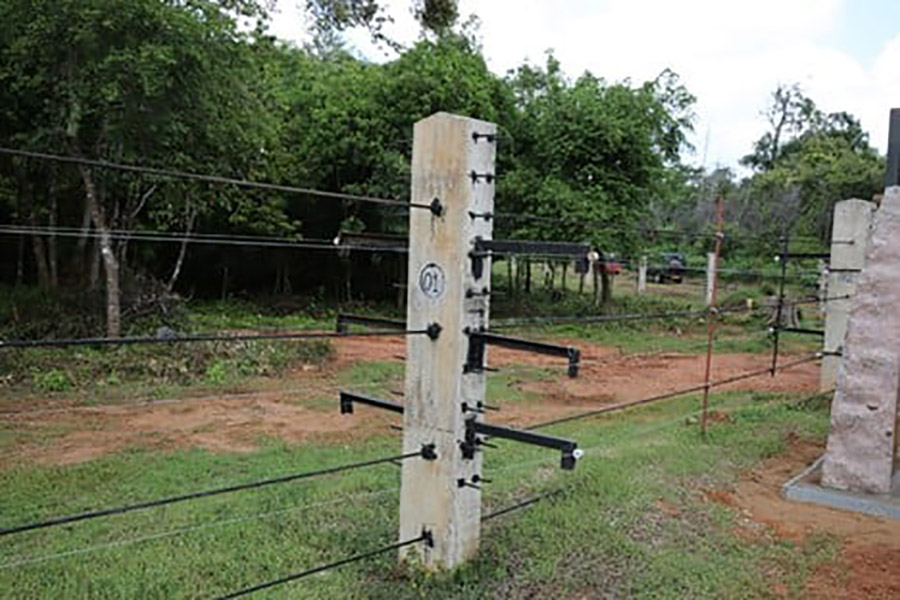
Relocation is not a solution
The main reason for the human-elephant conflict is that people encroach on the ancestral roaming grounds of these majestic beasts. The idea of relocating them to a confined alien territory is unacceptable. The relocation of elephants has endangered the lives of people in the area where the elephant is relocated.
Premarathne, a resident of Morawewa, Horowapathana said that the EHG was a failure as the elephants brought there made their way out due to the lack of food and said that to his knowledge about ten people had been killed by elephants which escaped from the EHG.

People living in villages around the Horowapathana Elephant Holding Ground, including Morawewa, Ihala Divulwewa, Thibiriaththewala, Ali Kimbulagala, Motagonewa, Kalavediulpotha and Katuwaragollewa are being endangered by wild elephants escaping from the Elephant Holding Ground. This clearly shows that the problem has not been answered but has simply been taken to another place.
What is the solution?
Dr. Prithviraj Fernando, a wild elephant researcher, points out that officials in an environment where wild elephants are dying because of malnutrition and neglect, should adopt scientific methods such as protecting the habitat, food and water resources of the elephants as well as ensuring an ecological balance. But unsuccessful methods, such as capturing wild elephants and holding them in places where there is no proper diet has resulted in wild elephants starving to death. The same thing is happening at the Horowpathana Elephant Holding Ground. He points out that a wild elephant should consume about 200 to 300 kilograms of food daily. The required amount of food is not available in the secondary forests at EHG so additional food should be provided to these animals.

According to Dr Sumith Pilapitiya, former Director-General of the Department of Wildlife Conservation, an adult elephant living in the forest travels a distance of 20 to 25 km a day, while an elephant in musth (a regular phenomenon where a bull elephant’s testosterone levels rise dramatically resulting in aggressive behavior) travels about 60 km a day on average. However, the total size of the Horowapathana Wild Elephant Holding Ground is only 997 hectares (2466 acres/ 10 square kilometers) and holding elephants at the EHG completely obscures the natural behavior of these animals and their ability to live freely.
”There was pressure from political authorities and the community to capture the ferocious elephants in the village. Initially, these elephants were taken to other wildlife sanctuaries. But they put radio collars on the elephants to see what would happen to them. According to the data collected, it was evident that the elephants were trying to return to their home range because elephants love their habitat. A lot of collisions with people take place while they are returning to their home range. The Department of Wildlife Conservation took steps to set up this elephant detention center as a solution to this problem,” said Dr Sumith Pilapitiya.
Exploitation of funds
The audit report reveals that five wild elephants died due to malnutrition, although the postmortem reports of the elephants held at the Horowapathana Elephant Holding Ground confirmed that nine wild elephants died of malnutrition between 2014 and 2019 alone.
A sum of Rs 8.1 million (Rs. 8,187986.20) had been allocated from 2015 to 2020 to the Horowapathana Elephant Holding Ground to provide food for the elephants being held there. It is evident that the funds had not been properly utilized to provide essential nutrients to these animals.
“Elephants are not dying because they do not want to eat. They escape somehow. Sometimes those elephants are very weak. Elephants are also injured when they jump over fences. An escaped elephant died about four years ago in the Ranawarapitiya area in Morawewa,” said W. Dilshan.
A wildlife official said that the remaining few elephants at the EHG are also suffering from malnutrition, because funds for supplementary food were suspended after the 2019 audit. In response to an inquiry made on 23 March 2021, the Director-General of the Department of Wildlife Conservation said that the provision of supplementary food had been stopped because there was sufficient food within the EHG. However, an investigation has revealed that it is a forest system with large trees and does not have proper undergrowth for the elephants to eat.
The most recent death of an elephant at the Horowapathana Elephant Holding Ground was reported on 12July 2021. The dead elephant which was found was about 30 years old and 8 feet 6 inches tall. It had been captured from the Cement Village area in Puttalam on 2 July 2018. A news report in The ‘Ada’ newspaper, noted that the elephant was suffering from malnutrition after being brought to the Horowapathana Elephant Holding Ground. But due to the lack of attention and negligence of the authorities, the elephant had starved to death. The postmortem examination of the elephant was carried out on 14 July 2021.
Shortage of food
A search made on Google Earth in July 2021, when the elephant died, revealed that the area was experiencing severe dry weather at that time and it was also observed that the water in the four small tanks within the EHG was also drying up.
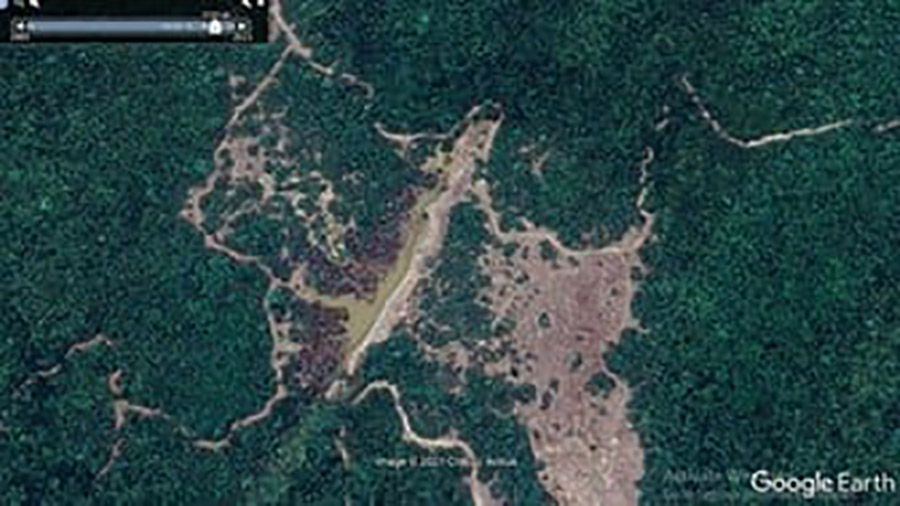
In most instances when elephants within the Horowapathana EHG died due to starvation it was found that the area was experiencing extremely dry weather and even the tanks within the EHG were drying up.
Dr Pilapitiya said that when he visited the Horowapathana EHG after his appointment as the Director-General of the Department of Wildlife Conservation it made him wonder why the EHG was established in that area. He said that according to research it has been found that an elephant needs a range of at least five square kilometers of primary or secondary forest or at least three square kilometers in areas where there is lush undergrowth. He emphasized that primary and secondary forests are not suitable as the there is not enough food for elephants


In areas where human-elephant conflict has taken place, most of the elephants that create problems are solitary males. These are elephants that are chased away from the herd when they reach a certain age. Under normal circumstances, they join another herd. But due to deforestation and unplanned elephant enclosures, the elephants that are unable to join another herd are compelled to live as solitary elephants. Hence, the majority of the elephants brought to the EHG are males. It was found that of the total of 65 elephants brought to the Horowapathana EHG 64 were males!
Dr Prithviraj Fernando points out that these elephants taken to the EHG are active elephants with strong genes and keeping them confined directly affects the elephant population as they are unable to mate and also causes the loss of the genetic lineage of strong elephants.
The Minister’s response

The Minister of Wildlife and Forest Conservation, C.B.Ratnayake said that he had instructed the Secretary of the Ministry to conduct an inquiry into the findings of the audit report. He also admitted that the investigations are swept under the carpet at times because of the friendliness among the officers. “We will call for that report in 2022,” he said.
He also said that he had not been informed by wildlife officials about the deaths of elephants at EHG, adding that it was administered through the State Ministry.
When an inquiry was made to the State Minister of Wildlife Protection, Adoption of Safety Measures Wimalaweera Dissanayake, he said that wildlife officials had not informed him that the elephants at the EHG would die without food. He added that they were taking measures to feed the elephants again. He said that more elephants would not be brought to the EHG until arrangements are made to provide additional food for the elephants and that action would be taken to move the animals to protected areas.”
Wimalaweera Dissanayake also said that steps will be taken to set up an Elephant Viewing Center at the Horowapathana Elephant Holding Ground.
This investigation reveals that wildlife officials and decision-makers should be held responsible for the death of wild elephants at the Horowapathana Elephant Holding Ground and that the Department of Wildlife Conservation has neglected its primary role in conserving wildlife.








